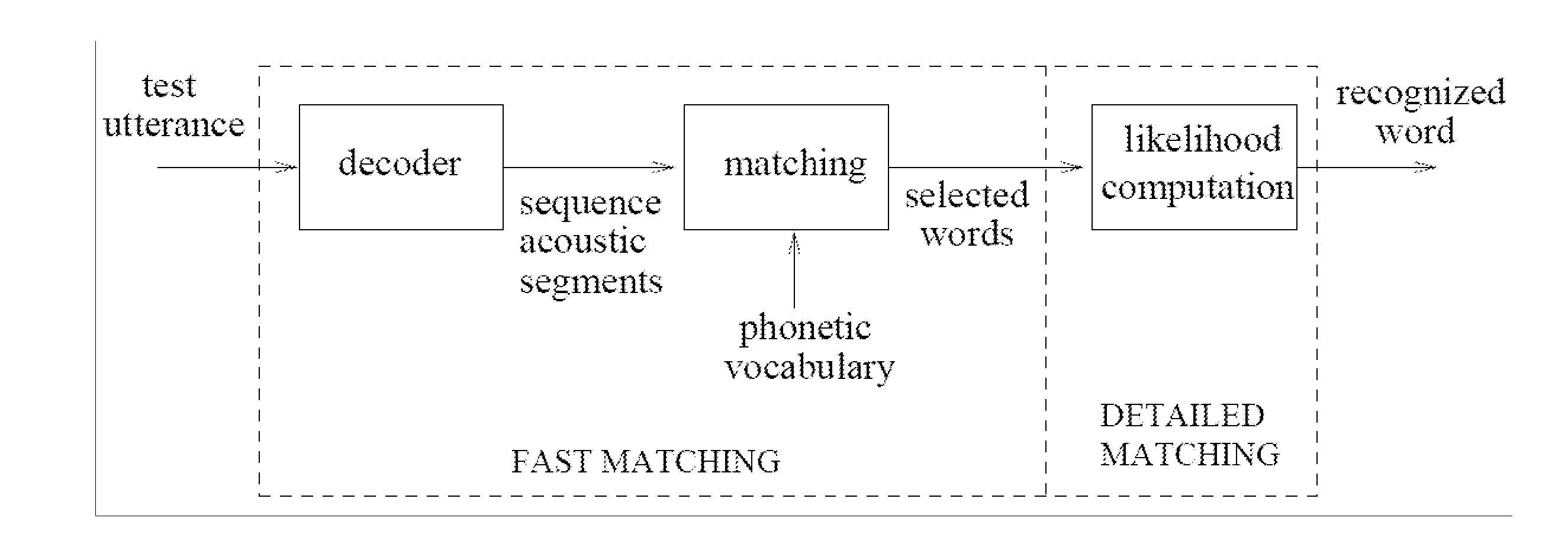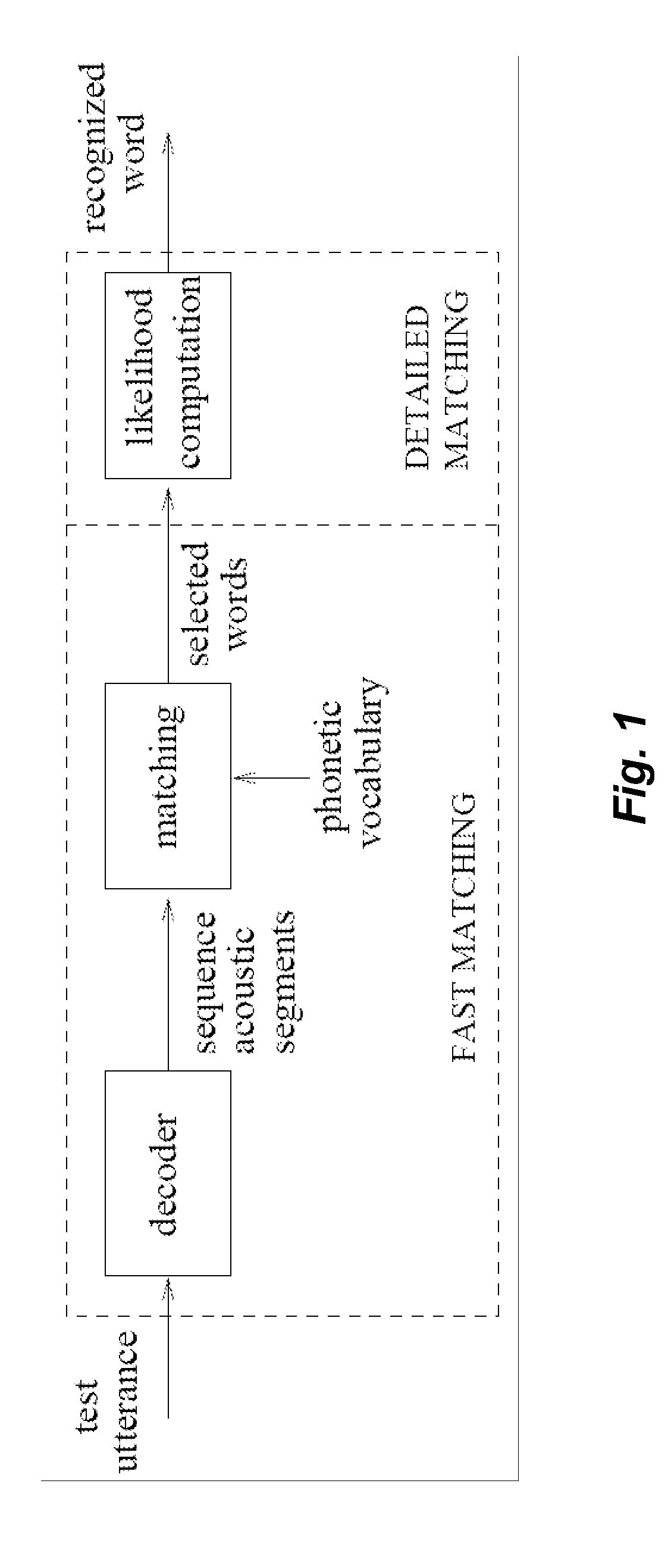Probabilistic Representation of Acoustic Segments
a probabilistic representation and acoustic segment technology, applied in the field of speech recognition, can solve the problems of high computational cost, direct relationship of complex asr tasks, and increasing complexity
- Summary
- Abstract
- Description
- Claims
- Application Information
AI Technical Summary
Problems solved by technology
Method used
Image
Examples
Embodiment Construction
[0007]Standard speech recognition systems for embedded systems rely on a phonetic decoder for describing the test utterance. Accordingly, the test utterance is typically characterized as a sequence of phonetic or sub-phonetic classes. By allowing that only one phoneme describes an acoustic segment, the representation is over-simplified and potentially relevant information is lost.
[0008]The typical embedded ASR approach closely parallels with models of human speech recognition (HSR). Studies on HSR assert that human listeners map the input acoustic signal into a intermediate (pre-lexical) representation, which is then mapped into a word-based (lexical) representation. Further studies on HSR suggest that given the uncertainty for defining an appropriate set of pre-lexical units, these units should be probabilistic.
[0009]In embodiments of the present invention, the sequence of acoustic segments obtained from the decoder are treated as a mapping between the input signal and a set of pre...
PUM
 Login to View More
Login to View More Abstract
Description
Claims
Application Information
 Login to View More
Login to View More - R&D
- Intellectual Property
- Life Sciences
- Materials
- Tech Scout
- Unparalleled Data Quality
- Higher Quality Content
- 60% Fewer Hallucinations
Browse by: Latest US Patents, China's latest patents, Technical Efficacy Thesaurus, Application Domain, Technology Topic, Popular Technical Reports.
© 2025 PatSnap. All rights reserved.Legal|Privacy policy|Modern Slavery Act Transparency Statement|Sitemap|About US| Contact US: help@patsnap.com



